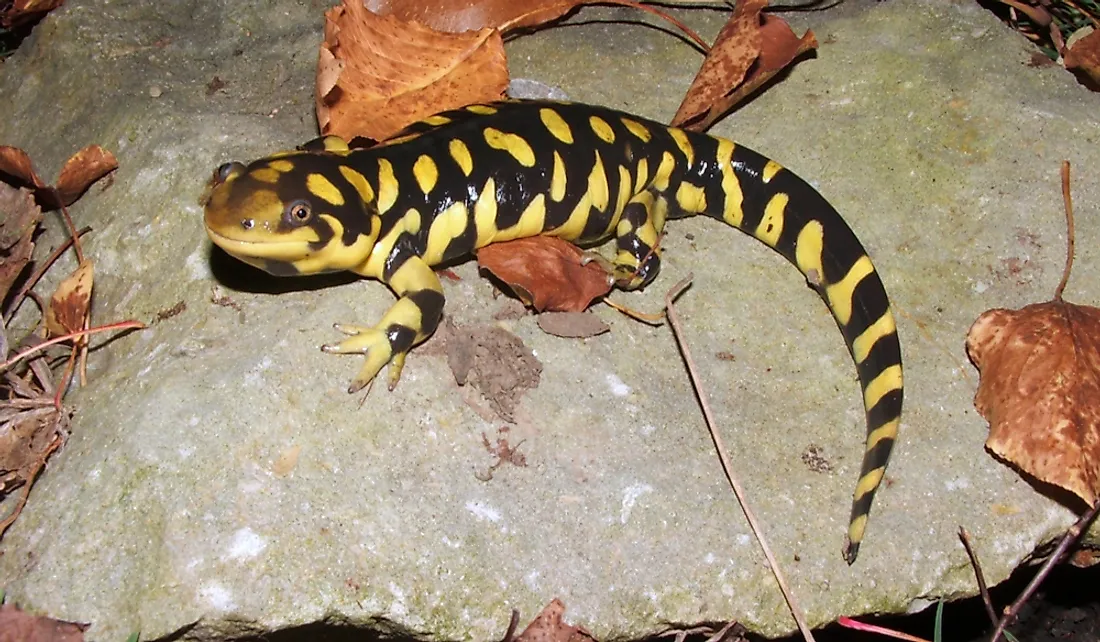What Is The Kansas State Amphibian?

Kansas is a US state located in the country's Midwest region. With an area of 213,100 km2 and an estimated population of 2,911,505, Kansas ranks as the 15th most extensive and 35th most populous US state. Kansas was admitted to the union on January 29, 1861, as the 34th US state. In addition to its official state nickname, "The Sunflower State," Kansas has various unofficial nicknames such as "The Wheat State," "The Jayhacker State," and "The Free State." Similarly, Kansas has a number of official state symbols, including a state bird (western meadowlark), state animal (American buffalo), state insect (western honey bee), state tree (plains cottonwood), and state grass (little bluestem). Kansas also has an official state amphibian: the barred tiger salamander.
Barred Tiger Salamander
The barred tiger salamander is one of the largest salamander species, with an average length of between 6 and 8.5 inches, although it can grow as long as 14 inches. Additionally, the species can live for up to 20 years. The salamander has a sturdy body, a broad head, and its color, which varies by range, can include grey, black or brown, with yellowish bars or spots. These bars and spots resemble those of a tiger, which explains the species' name. The front limbs have four toes, while the hind limbs have five toes. The larvae have a different appearance, with alternating light and dark spots, as well as pale stripes along the sides. The salamander has five known subspecies: gray barred tiger salamander; blotched tiger salamander; Sonoran tiger salamander; barred tiger salamander; and Arizona tiger salamander.
Habitat and Distribution
The barred tiger salamander is known to live throughout the state of Kansas, as well as the western United States and western Canada. Primarily a terrestrial species, the salamander lives in woodlands and forests, both deciduous and coniferous. The species can also be found in open fields, grasslands, deserts and semi-deserts, streams, upland meadows, and rough grounds. Despite its widespread distribution, it is often difficult to find a barred tiger salamander because it is nocturnal and its population is believed to have declined in recent years. The reasons for decline include loss of habitat, deforestation, and the introduction of non-native predatory species.
Diet and Reproduction
The nocturnal barred tiger salamander is an opportunistic eater, meaning it has a varied diet and will eat nearly anything it can catch. This often includes insect species, earthworms, and slugs. During the larval stage, the species spends all of its time in water, but becomes primarily terrestrial in adulthood. Reproduction can occur throughout the year and involves the laying of eggs in water.
Designating the Kansas State Amphibian
The barred tiger salamander (Ambystoma mavortium) has been the state amphibian of Kansas since April 13, 1994. The idea of designating the barred tiger salamander as state amphibian is linked to a second-grade class at OK Elementary in Wichita, Kansas, which petitioned the state governor in the spring of 1993 after learning about vertebrates in school. The barred tiger salamander was also designated as the state amphibian of Colorado on March 16, 2012.











